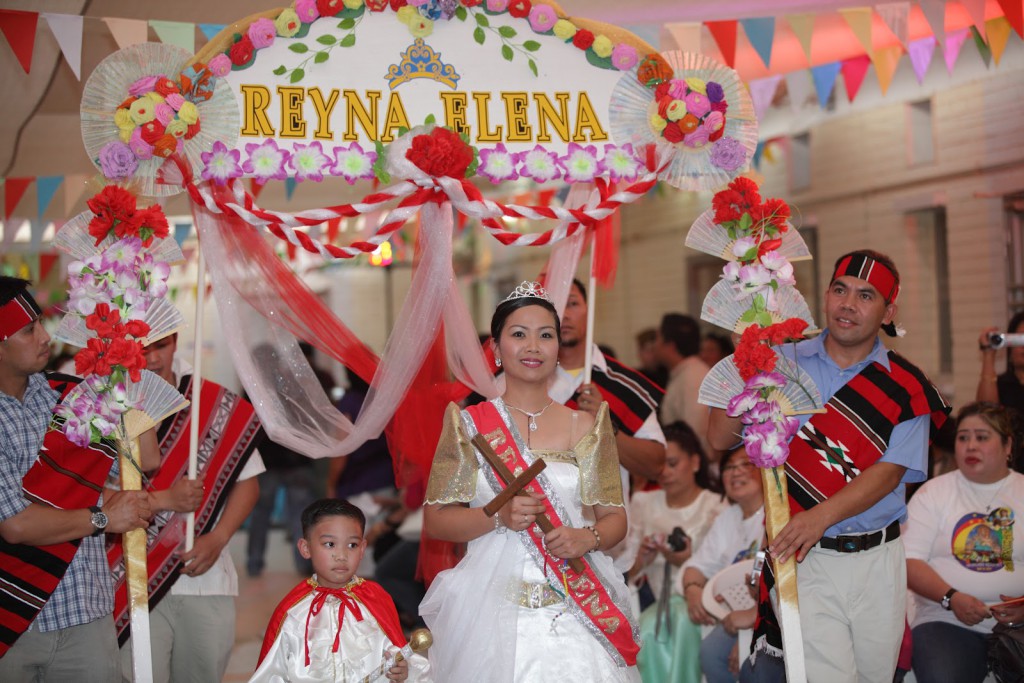Understanding the Santacruzan
The Philippines is a country that loves its festivals. There’s a celebration nearly every month, and May is no exception. It may be summer’s last hurrah, but as they say: you always save the best for last.

THE PROCESSION. A typical Santacruzan held in almost every town and/or community in the country. (Photo via Islands of the Philippines)
Flores de Mayo (Spanish for Flowers of May) is a celebration held every May in honor of the Blessed Virgin Mary. It’s a festival that’s celebrated throughout the country, marked by prayers and offerings of flowers, as well as the highly-anticipated Santacruzan.
History
The Santacruzan is a religious-historical parade that started in the mid-1800s, with the first being held in Malolos, Bulacan. It is held in honor of Queen Helena of Constantinople and her son, Constantine the Great, finding the True Cross: the cross that’s said to be the one upon which Jesus was crucified.
According to legend, the 75-year-old queen found three crosses during an expedition to the sight of the Crucifixion. To find the True Cross, she had an ailing servant lie on all three, with the one healing the servant deemed as the True Cross.
Meaning
While it has turned into an all-out pageant, complete with elaborate gowns worn by the most beautiful maidens in a community, the parade is not without its meaning. In some parts of the country, they stick to the true purpose of the event: to commemorate the finding of the True Cross, as well as the virtues embodied by each maiden.
The three virtues (hope, charity, and faith) are centric to the parade itself. The different reynas or queens also represent historical figures that are vital not just to the parade itself, but also to the history it represents.
Roles in the Parade
While the reynas are the highlight of the parade, there are other roles that play a vital role in the parade:
• Methuselah – shown as a bearded, old man bent with age, he rides a cart while toasting grains of sand in a pan over fire. This symbolizes that we will always go back to dust.
• Samaritana – a woman whom Christ spoke to at Jacob’s well. She represents an outcast who was reformed after meeting Christ, and reminds us that salvation is for all and not just for the faithful.
• Aeta – anyone dressed as a member of a tribal or regional ethnic group. It represents those groups who have embraced Christian faith.
• Veronica – the woman who wiped the face of Jesus. She carries a veil with three imprints of the Holy Face of Jesus instead of the usual one.
There are many more non-reyna roles in the parade, but these are some of the most common.

EVEN IN KUWAIT. Yes, this is a photo of a Reyna Elena in Kuwait. Filipino communities all over the world tend to celebrate Flores de Mayo. (Photo via http://floresdemayo2012.blogspot.com/)
The Reynas
The parade itself features a lot of reynas (upwards of 20, depending on the size of the community). The more prominent ones, however, are as follows:
• Reyna Fe – represents the virtue of faith. She carries a cross.
• Reyna Esperanza – symbolizes hope. She carries an anchor.
• Reyna Caridad – represents charity. She carries a red heart.
• Divina Pastora – has a shepherd’s staff.
• Rosa Mistica – carries a bouquet of roses.
• Reyna de las Flores – the Queen of Flores de Mayo. She carries a bouquet of flowers. Not to be confused with the next two reynas.
• Reyna Emperatriz – a representation of Queen Helena’s title Augusta (Empress or Queen Mother), a title given to her by Constantinople
• Reyna Elena – the personification of St. Helena. Often seen as the most beautiful or important maiden in the community, some communities keep her identity as a secret until the day of the parade. In other communities, they have as many as three. She is also accompanied by a small boy dressed as Constantine.
Sources: Ronna Encarnacion via behance.net, philippinecountry.com, philippines.hvu.nl, Asian Journal, Filcom Center, Wikipedia













